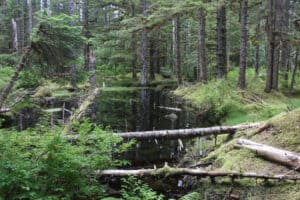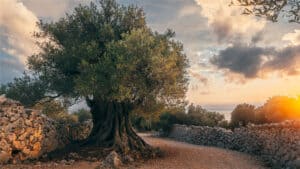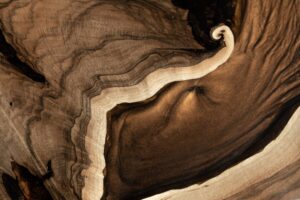
In the state of Maryland, there are over 200 species of trees native to the region. These include deciduous hardwoods such as oaks, hickories, maples, and walnuts. And then, there are the evergreen conifers like white pine and red cedar and the flowering shrubs such as dogwood and serviceberry. And don’t forget the unique species like pawpaw, sassafras, persimmon, and sweet bay magnolia.
In addition to these varieties of trees found in Maryland’s forests and woodlands, many types of wetland plants grow wild in wetlands throughout the state. These include cattails, bulrushes, sedges, and rushes that provide food for wildlife while also helping reduce soil erosion in these areas. With so many different kinds of trees present across Maryland’s landscape, it can be difficult to keep track—but with some research, anyone can discover all the incredible native tree species growing within this beautiful state!
1. American Holly
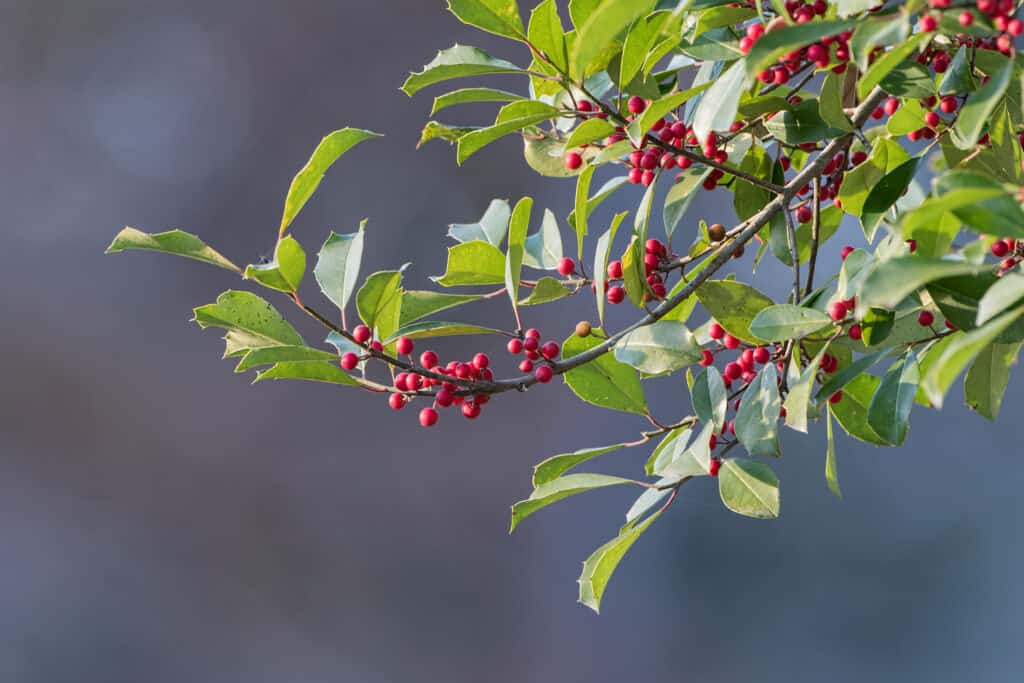
The American holly can reach a height of up to 50 feet in ideal conditions.
©Bonnie Taylor Barry/Shutterstock.com
American holly, or Ilex opaca, is native to Maryland and a member of the Aquifoliaceae family. It is an evergreen tree that can reach heights of up to 50 feet in ideal conditions. The leaves are glossy and dark green with sharp spines on the margins. Its fruit is a bright red berry that often remains on the branches even after birds and animals have picked off other fruits.
American holly prefers moist soils but can tolerate dryness for short periods of time as well as partial shade or full sun exposure. Additionally, it requires adequate drainage for best growth results, especially during prolonged wet weather periods, to avoid root rot.
2. Arborvitae
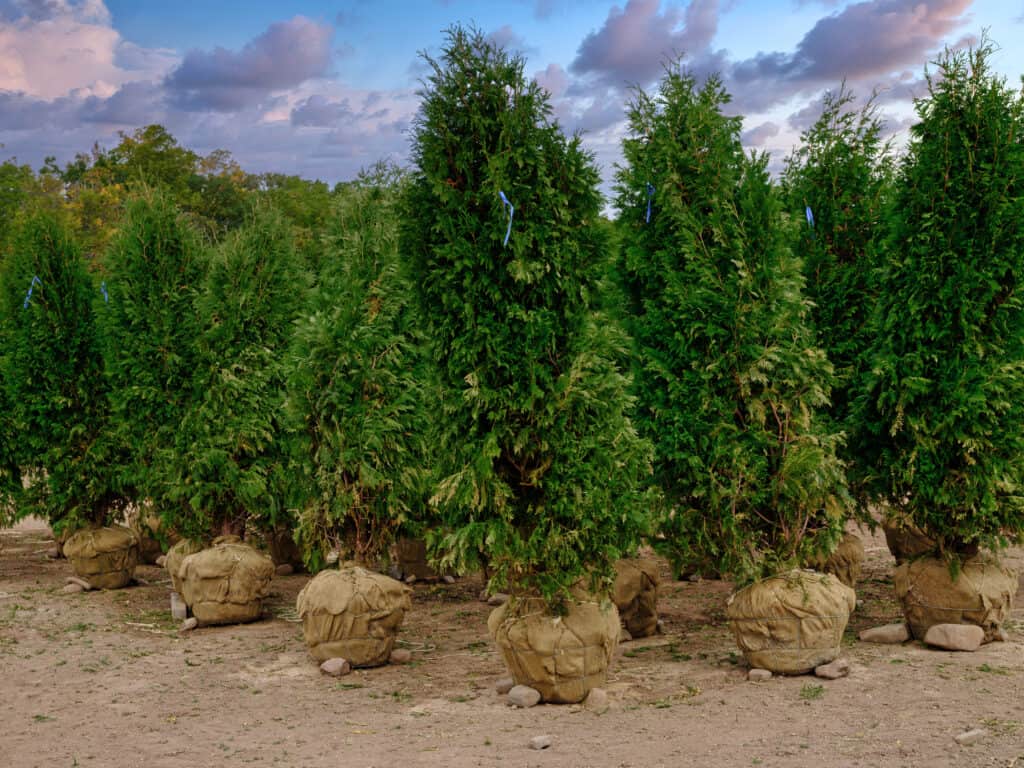
Arborvitae can be used as an ornamental tree in landscapes because of its attractive form.
©Bruce Peter/Shutterstock.com
The Arborvitae (Thuja occidentalis) is a native to Maryland and the larger Eastern U.S. It grows in many different shapes, from tall and columnar to broad and pyramidal. Its evergreen foliage provides year-round color, with bright green needles that often turn bronze or yellowish-brown during winter.
This tree is especially popular for its use as a hedge or privacy screen due to its dense foliage. Additionally, it can be used as an ornamental tree in landscapes because of its attractive form. The Arborvitae prefers acidic soils with good drainage but will tolerate some alkaline conditions if necessary. However, it cannot handle wet feet after heavy rains or poor drainage, so make sure your planting area has adequate soil quality before planting one!
For best growth results, provide partial shade for young trees and full sun for mature specimens. This deciduous conifer should be watered regularly throughout the growing season but avoid overwatering at all costs!
3. Eastern Red Cedar
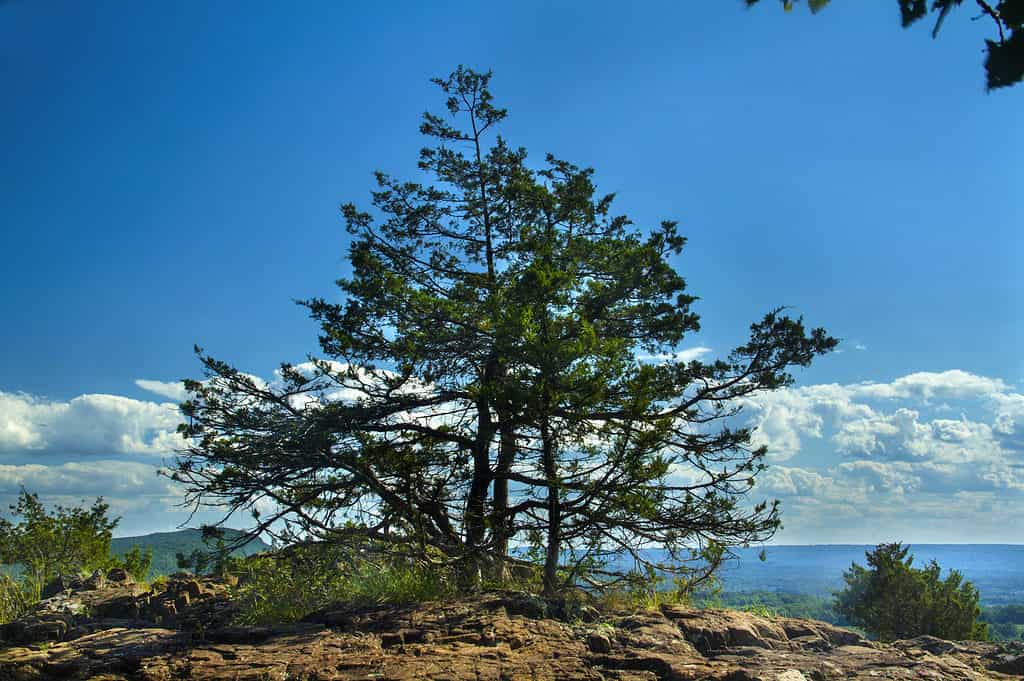
Eastern red cedar requires full sun exposure for best growth but can tolerate partial shade and well-drained soils.
©iStock.com/Holcy
The Eastern red cedar (Juniperus virginiana) is an evergreen coniferous tree native to the eastern United States. It grows in various habitats, from dry upland ridges to wet stream banks, and often forms thickets. It has a slow growth rate and can reach heights of 30-50 feet tall with trunk diameters of 12-36 inches.
The bark is reddish-brown or grayish-brown in color and has scaly plates that flake off as the tree matures. The foliage consists of long, stiff needles that are blue-green on top and silvery white underneath with sharp points at their tips when young; these soften as they age. Its flowers are small yellow cones that produce bluish fruit, which birds love to eat! Eastern red cedar requires full sun exposure for best growth but can tolerate partial shade and well-drained soils.
4. Sweetbay Magnolia
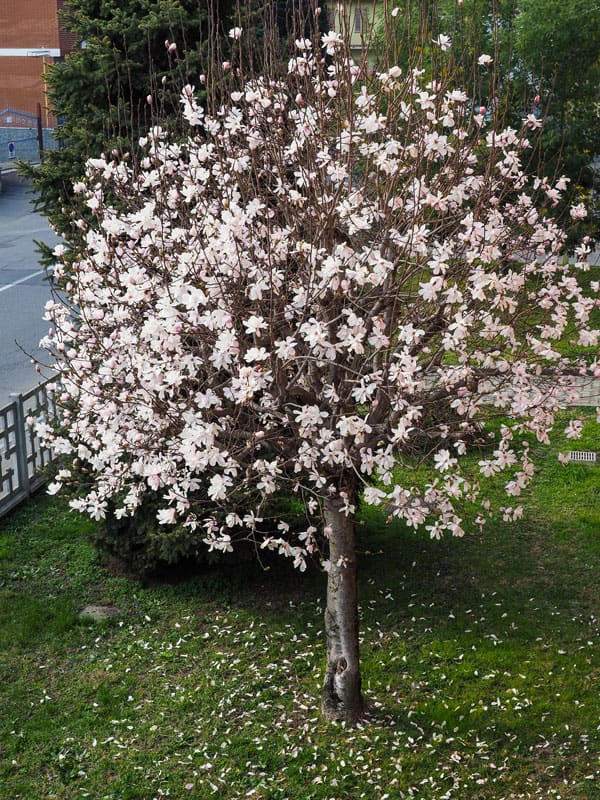
Sweetbay magnolia is a great choice for gardeners looking for something beautiful near water features.
©t50/Shutterstock.com
The sweetbay magnolia (Magnolia virginiana) is native to Maryland and can be found in many parts of the Eastern United States. It is an evergreen tree that typically grows 30-50 feet tall and 15-25 feet wide, with a pyramidal shape and horizontal branching.
Its leaves are alternate, simple, oblong, or elliptical in shape, up to 8 inches long, dark green on top, and silvery white underneath. The fragrant flowers bloom from May through July; they have six white petals with yellow stamens in the center. The bark of the sweetbay magnolia is smooth grayish brown and may develop shallow ridges with age.
This tree prefers full sun to partial shade locations but also tolerates wet soil conditions better than most other magnolias – making it a great choice for gardeners looking for something beautiful near water features like ponds or streams. With its stunning beauty, sweet fragrance, a fast growth rate of 2-3 feet per year once established, and adaptability to both dryness and wetness – the sweetbay magnolia is an excellent addition to any landscape!
5. American Beech
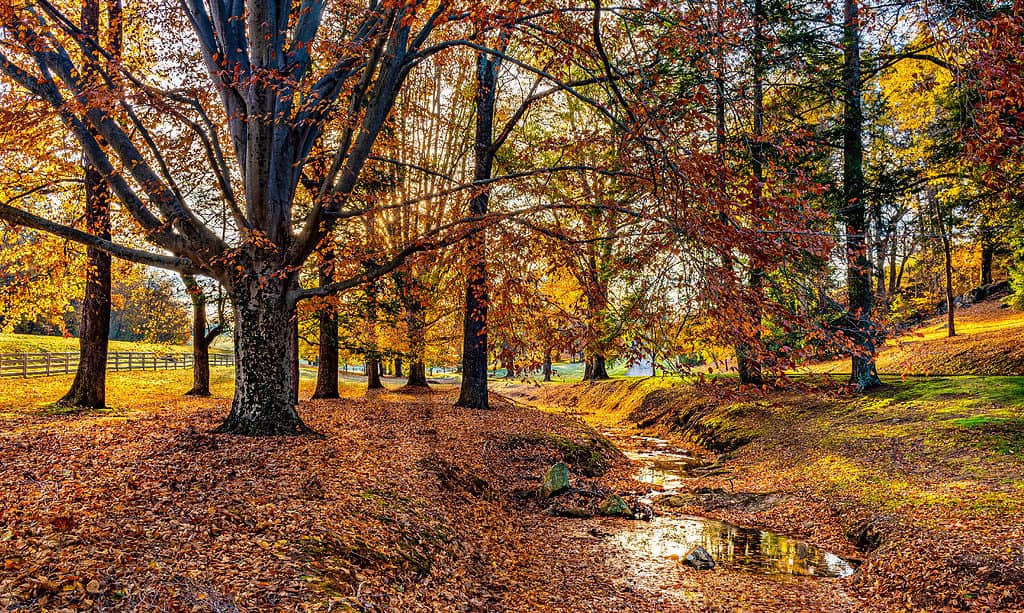
American beeches prefer moist soils rich in organic matter.
©Gerry Bishop/Shutterstock.com
The American beech (Fagus grandifolia) is a deciduous tree native to Maryland and the Eastern United States. It has smooth gray bark with wavy ridges, which can be easily scratched with a fingernail. The leaves are oval-shaped and dark green, turning golden brown in autumn before falling off for winter. They are also known for their showy yellowish-green male flowers that appear in early spring and female flowers that form small nuts later in the season.
American beeches prefer moist soils rich in organic matter, but they will tolerate other soil types as well so long as there is good drainage. They do best when exposed to full sun or partial shade, although they may require extra protection from strong winds if planted near open areas such as fields or prairies. Additionally, its shallow root system requires regular watering during dry spells throughout the summer months.
This majestic tree can reach heights up to 80 feet with an equal spread and looks great when used for specimen planting or grouped together for shady groves along streetscapes or large yards/gardens!
6. Black Cherry
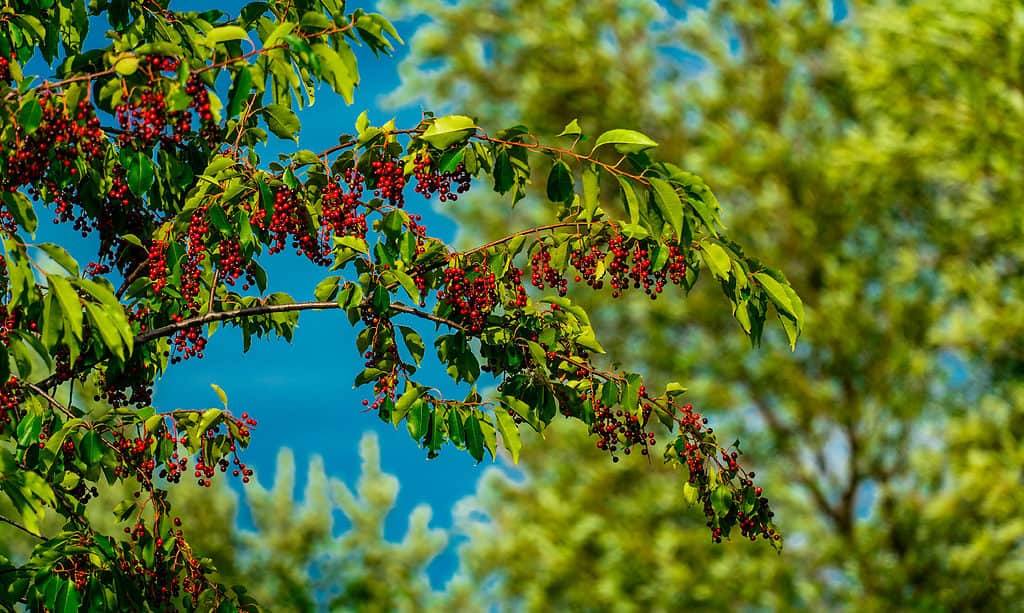
Black cherries prefer moist soils but can tolerate some drought conditions.
©iStock.com/TeleMakro Fotografie (Ina Hensel)
The black cherry (Prunus serotina) is a medium or large deciduous tree native to Maryland. It has an average height of 30-40 feet and can reach heights of up to 80 feet. The bark of the Black Cherry tree is relatively smooth and grayish, with small lenticels scattered across its surface. Its leaves are alternate, simple, and oval-shaped with doubly serrated margins; the upper side is dark green, while the underside is paler in color.
In spring, small white flowers appear in clusters on its branches, followed by edible red cherries that ripen over the summer. These fruits attract birds and other wildlife, which help disperse seeds for further growth of this species throughout Maryland’s woodlands.
Black cherries prefer moist soils but can tolerate some drought conditions if necessary as long as they receive full sun exposure each day during their growing season. Prune sparingly, as it removes potential fruit production branches for future years’ harvests.
7. Hickory
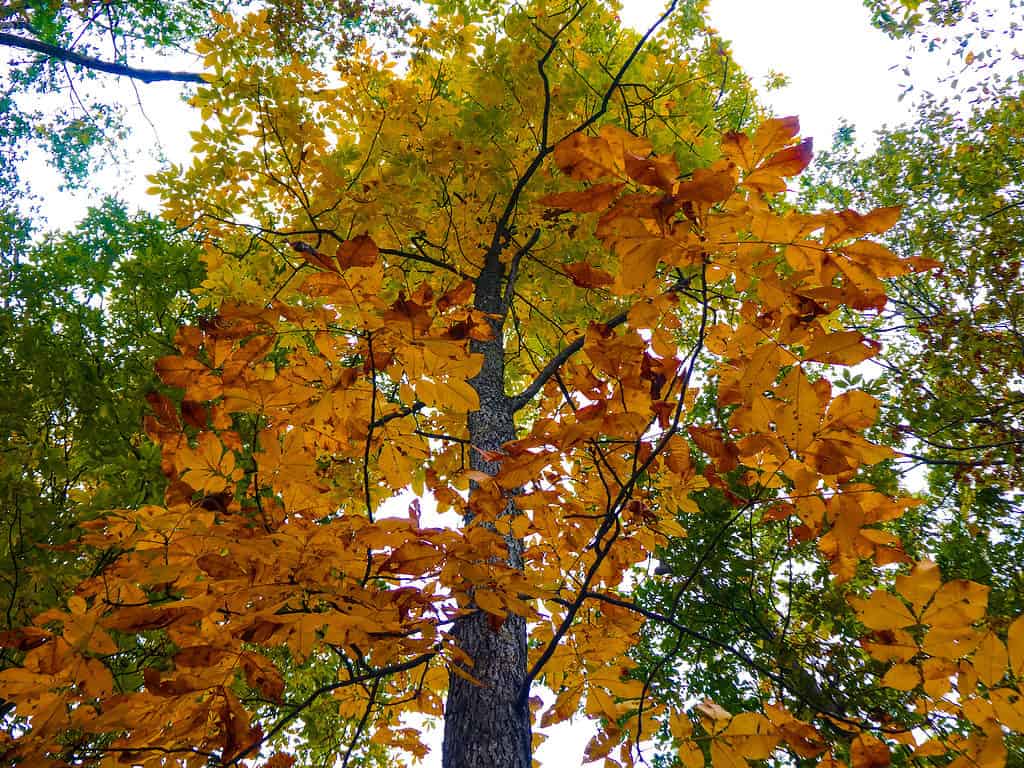
Growth requirements for hickory trees include full sun exposure and well-drained soil.
©ForestSeasons/Shutterstock.com
Hickory (Carya sp.) is a deciduous tree that can be found native to the state of Maryland. It typically grows to around 60–130 feet tall and carries a round crown with ascending branches.
Hickory trees are known for their strong wood, which makes them popular in many industries, such as furniture-making, tool handles, and even flooring.
In terms of characteristics, hickories are generally characterized by alternate compound pinnate leaves with serrate leaflets having an acuminate tip. They also produce edible nuts in the form of drupes, which are encased within four thin walls making it easy to recognize them from other nut species.
Growth requirements for hickory trees include full sun exposure and well-drained soil rich in organic matter; they tend to grow best when planted in moist soils since they do not tolerate drought very well.
8. Maple
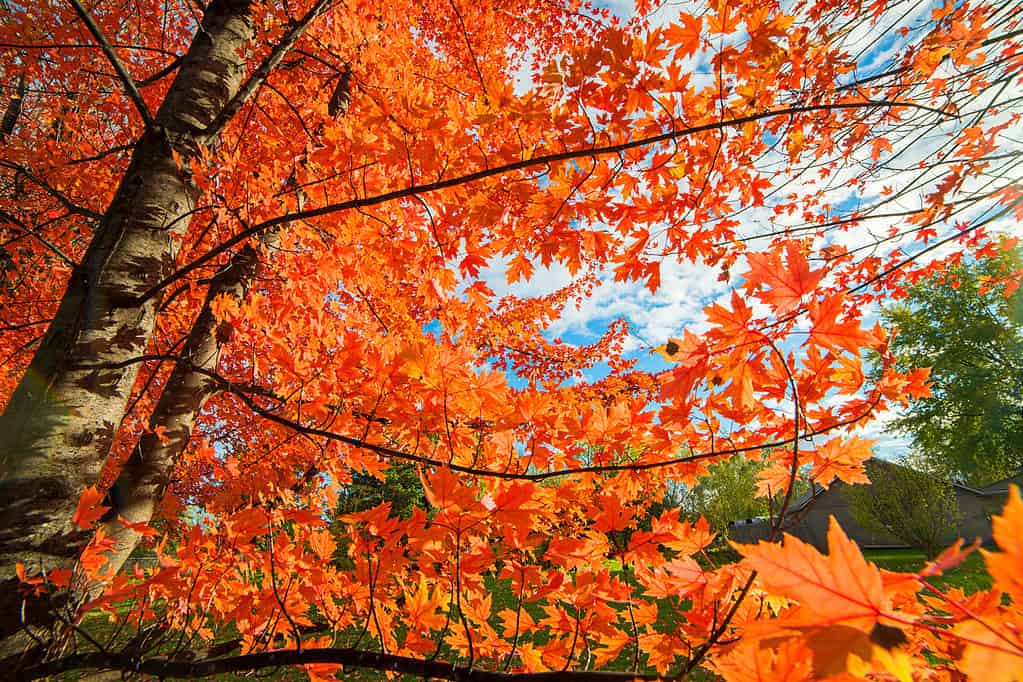
In autumn, maple trees turn yellow, orange, or red.
©Jeff Caverly/Shutterstock.com
The maple (Acer sp.) is a deciduous tree native to Maryland and most of the United States. It has an oval shape with lobed leaves that turn yellow, orange, or red in autumn. The bark is usually grayish-brown with interlacing ridges, and the wood can be used for furniture and flooring. Flowers are small but attractive, appearing greenish-yellow in springtime.
Maples also have lovely winged seeds, a favorite food of many birds, such as quail, cardinals, and grosbeaks. Sugar maples are also a source of delicious maple syrup.
Maple trees prefer full sun to partial shade but will grow in almost any soil type as long as it’s well-drained. They’re drought-tolerant once established and require regular pruning to keep them healthy and beautiful. Maples are also wind resistant, so they make great hedgerows or windbreaks around homes or gardens.
9. Oak
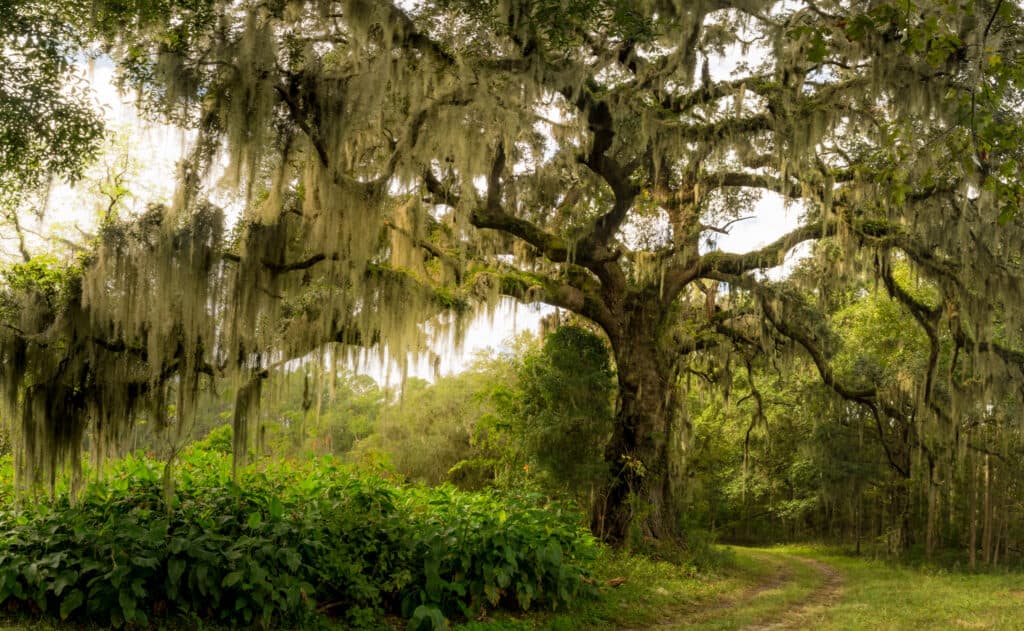
In Maryland, you can find oak trees in woodlands and forests.
©Serge Skiba/Shutterstock.com
Oak (Quercus sp.) is a tree native to Maryland that can be found in many different habitats, from woodlands and forests to urban areas. When young, they typically have deeply lobed leaves with pointed tips and a light green color. As they age, the leaves become darker green and often turn brownish or yellowish in autumn.
Oaks come in many shapes and sizes, ranging from small shrubs to large trees that can reach heights of 70–80 feet tall with trunks up to 3–4 feet wide. These trees require full sun exposure for optimal growth and generally prefer well-drained soil that is slightly acidic but not overly dry or wet; water regularly during periods of drought.
Oak trees are known for their strength and durability, making them ideal for landscaping projects such as windbreaks or providing shade along walkways or driveways. Their hardwood is highly valued for its beauty, strength, and resistance to rot – perfect for furniture construction!
10. Sassafras
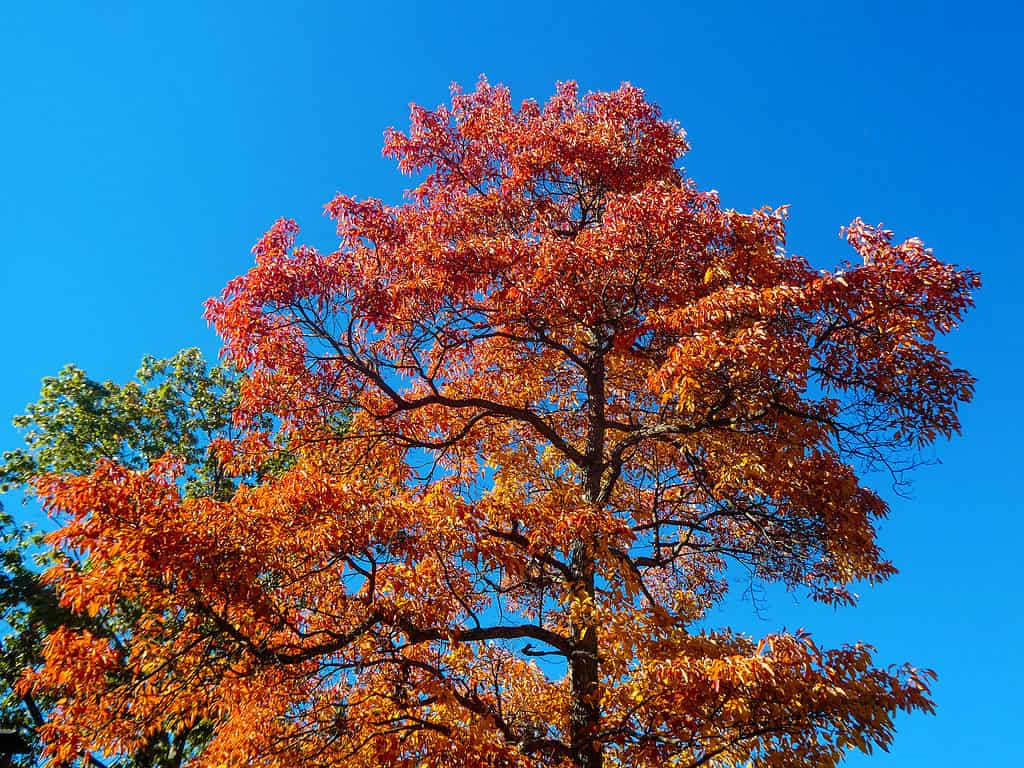
The sassafras tree is a popular choice for landscaping yards and gardens throughout Maryland.
©ForestSeasons/Shutterstock.com
Sassafras (Sassafras albidum) is a deciduous tree native to Maryland and other parts of the eastern United States. It has dark green, glossy leaves with three distinct shapes—oval, mitten-shaped, and three-lobed—and pale yellow flowers that bloom in the spring. In autumn, its foliage turns an array of golden hues before dropping off for winter. Its bark is thick and furrowed, with small rootlets growing along its length.
Sassafras trees thrive in full sun or partial shade but prefer moist soils high in organic matter. They are tolerant of both wet and dry conditions once established, making them a popular choice for landscaping yards and gardens throughout Maryland. Pruning should be done during the late summer or early fall when they are not actively growing since pruning can stimulate new growth, which might expose it to cold damage during frosty winter months.
11. Tulip Poplar
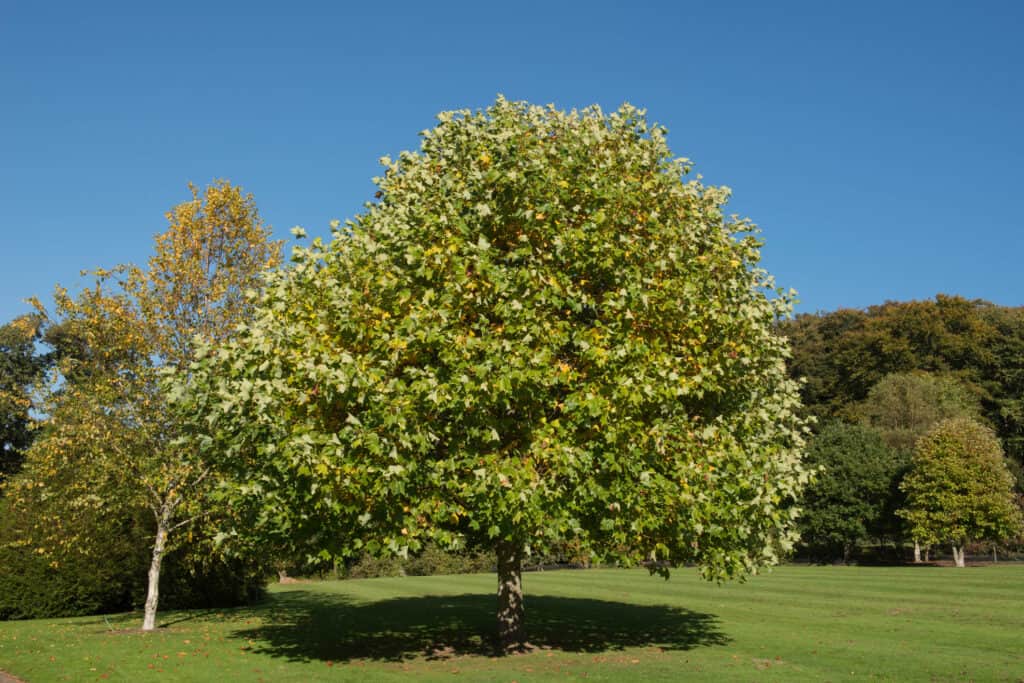
Tulip poplars require full sun exposure but can tolerate some shade, especially when young.
©iStock.com/pcturner71
The tulip poplar (Liriodendron tulipifera) is a deciduous tree native to Maryland and found throughout the eastern United States. It typically grows between 50-90 feet tall with a broad, pyramidal form. The leaves are simple, alternate, and usually have four lobes resembling those of a tulip flower. They turn yellow in the fall before dropping off for the winter months. The bark is dark gray or brownish-gray and tends to flake off as it ages.
The most interesting feature of this tree is its beautiful flowers which bloom from April to May. These bright yellow flowers have an orange blotch at their base and produce winged fruits that mature in September or October.
Tulip poplars require full sun exposure but can tolerate some shade, especially when young. They prefer moist acidic soil but are tolerant of poor drainage. Prune regularly to maintain healthy growth, and apply mulch to the base for moisture retention.
12. White Ash
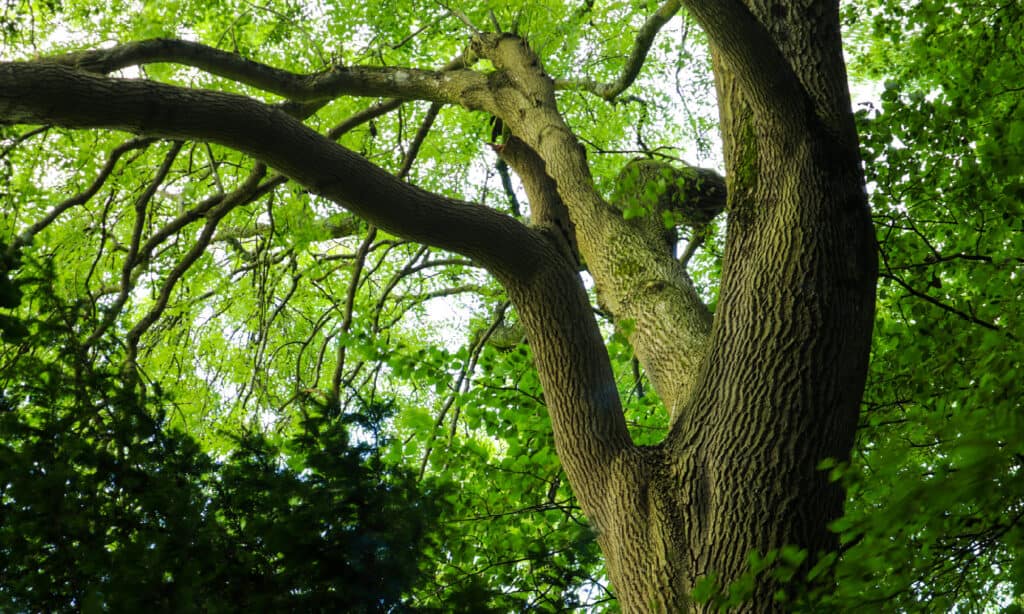
You can plant white ash in residential areas because of the shade it provides.
©iStock.com/Alex Montacute
White ash (Fraxinus americana) is a native tree of Maryland that grows best in moist, well-drained soils. It is an attractive deciduous tree with a rounded crown and medium to dark gray bark. White ash trees can reach heights of up to 80 feet, with trunk diameters reaching 3 feet or more at maturity.
In fall, the leaves turn yellowish-green before falling off. These trees produce small clusters of light green flowers in spring, followed by distinctive flattened fruits known as samaras that hang down from the branches like little parachutes.
White ash trees tolerate air pollution and drought conditions but prefer full sun for optimum growth and health. They provide important food sources for birds, squirrels, and other wildlife throughout the year due to their prolific seed production. These trees also provide excellent shade during hot summer months when planted in residential areas or parks.
Summary Of 12 Incredible Trees Native To Maryland
| Rank | Native Tree |
|---|---|
| 1 | American Holly |
| 2 | Arborvitae |
| 3 | Eastern Red Cedar |
| 4 | Sweetbay Magnolia |
| 5 | American Beech |
| 6 | Black Cherry |
| 7 | Hickory |
| 8 | Maple |
| 9 | Oak |
| 10 | Sassafras |
| 11 | Tulip Poplar |
| 12 | White Ash |
The photo featured at the top of this post is © iStock.com/WerksMedia
Sources
- Department of Natural Resources, Available here: https://dnr.maryland.gov/wildlife/Pages/habitat/wamdtrees.aspx
- University of Florida, Available here: https://hort.ifas.ufl.edu/database/documents/pdf/tree_fact_sheets/magvira.pdf
- NC Extension, Available here: https://plants.ces.ncsu.edu/plants/fagus-grandifolia/
Thank you for reading! Have some feedback for us? Contact the AZ Animals editorial team.



